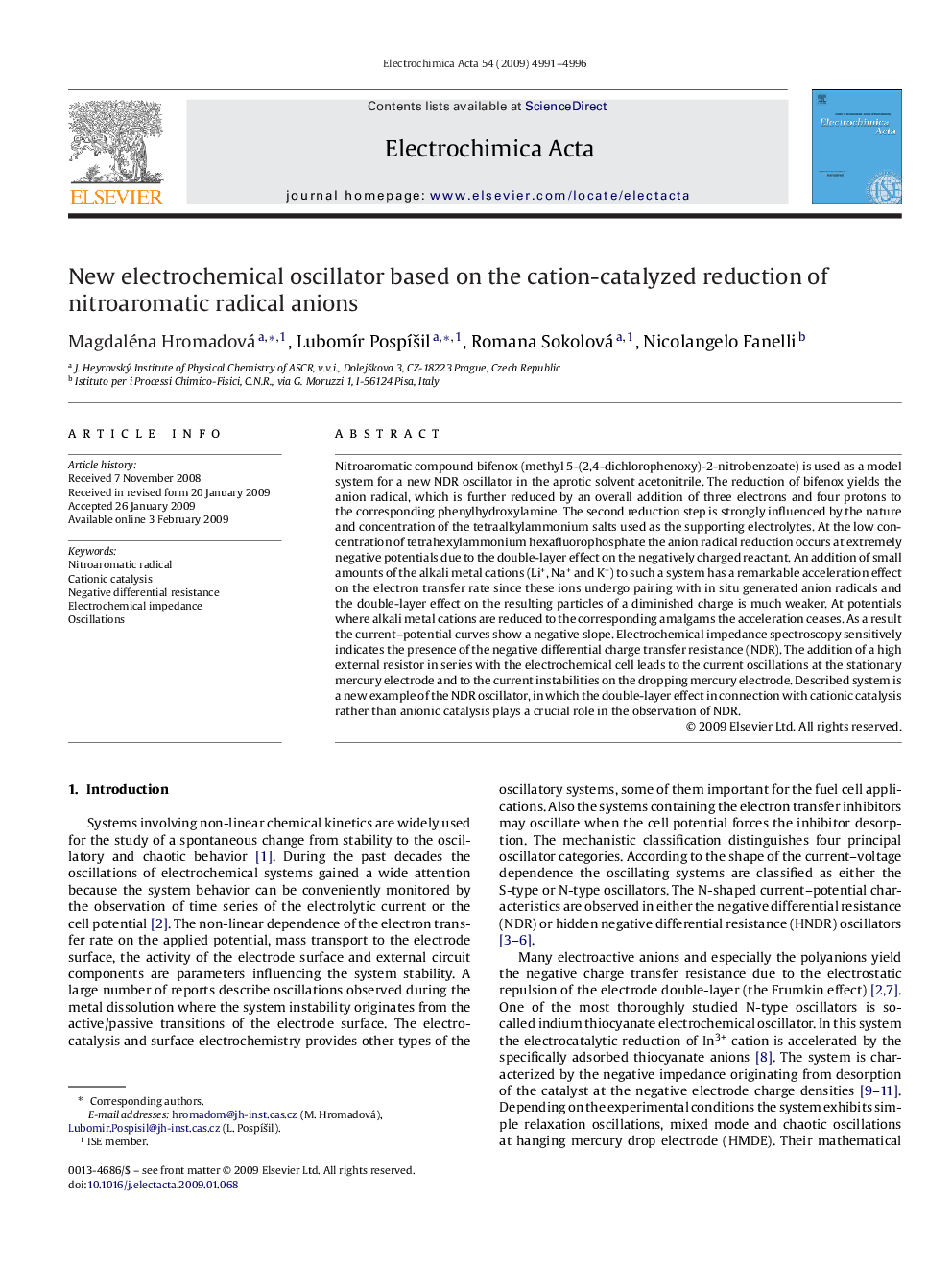| Article ID | Journal | Published Year | Pages | File Type |
|---|---|---|---|---|
| 193374 | Electrochimica Acta | 2009 | 6 Pages |
Nitroaromatic compound bifenox (methyl 5-(2,4-dichlorophenoxy)-2-nitrobenzoate) is used as a model system for a new NDR oscillator in the aprotic solvent acetonitrile. The reduction of bifenox yields the anion radical, which is further reduced by an overall addition of three electrons and four protons to the corresponding phenylhydroxylamine. The second reduction step is strongly influenced by the nature and concentration of the tetraalkylammonium salts used as the supporting electrolytes. At the low concentration of tetrahexylammonium hexafluorophosphate the anion radical reduction occurs at extremely negative potentials due to the double-layer effect on the negatively charged reactant. An addition of small amounts of the alkali metal cations (Li+, Na+ and K+) to such a system has a remarkable acceleration effect on the electron transfer rate since these ions undergo pairing with in situ generated anion radicals and the double-layer effect on the resulting particles of a diminished charge is much weaker. At potentials where alkali metal cations are reduced to the corresponding amalgams the acceleration ceases. As a result the current–potential curves show a negative slope. Electrochemical impedance spectroscopy sensitively indicates the presence of the negative differential charge transfer resistance (NDR). The addition of a high external resistor in series with the electrochemical cell leads to the current oscillations at the stationary mercury electrode and to the current instabilities on the dropping mercury electrode. Described system is a new example of the NDR oscillator, in which the double-layer effect in connection with cationic catalysis rather than anionic catalysis plays a crucial role in the observation of NDR.
